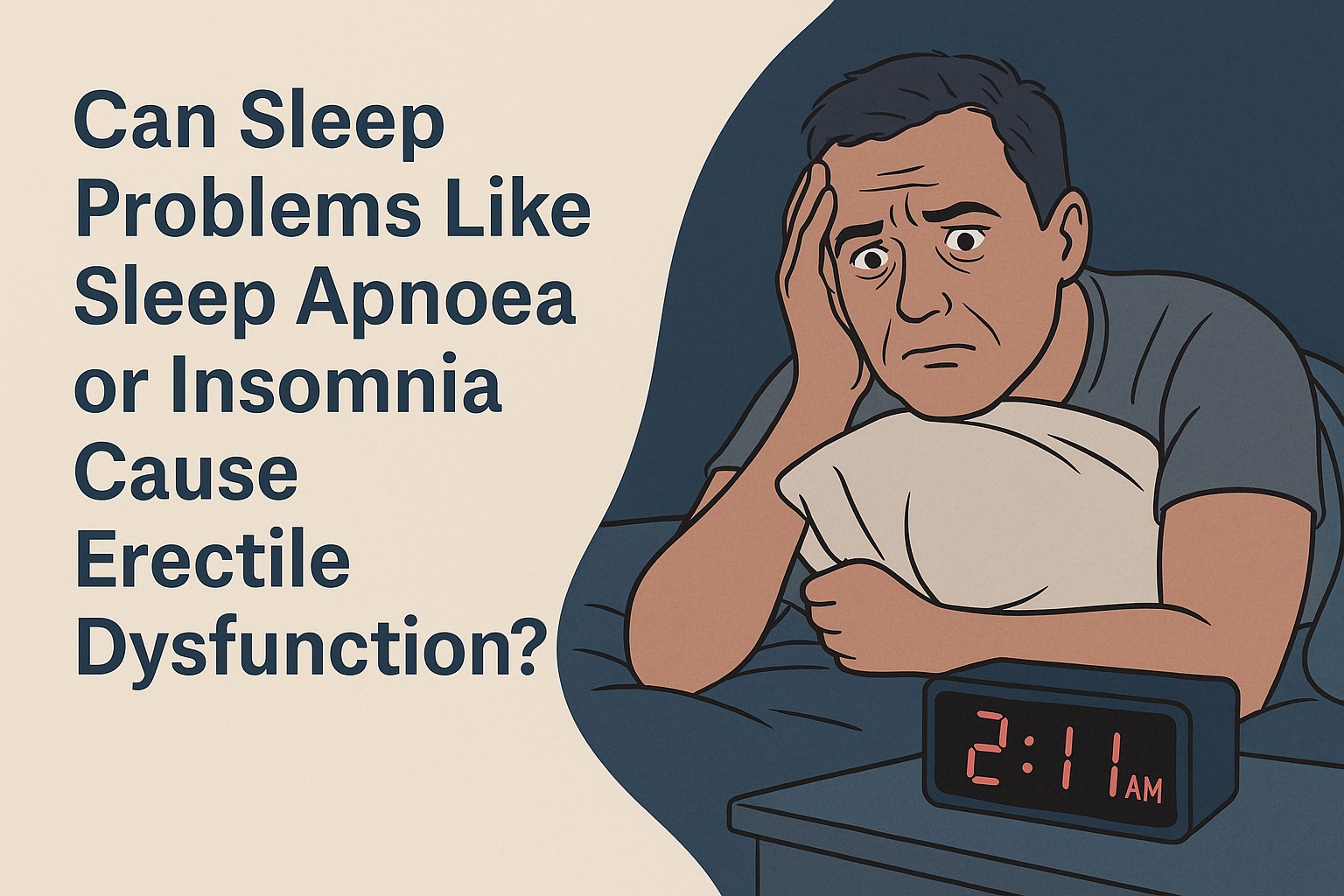What is Priapism?
Priapism is a condition where someone has an erection that lasts for more than four hours without any sexual activity or interest. This is not just uncomfortable; it can be a serious medical emergency. If not treated quickly, it can cause long-term damage to the penis and result in erectile dysfunction (ED), which is the inability to get or maintain an erection.
How Common is Priapism?
Priapism is a rare condition, but when it does occur, it’s often a serious issue. The overall incidence of priapism is about 0.5 to 1 case per 100,000 people each year. However, these numbers might underestimate the true prevalence because some people might not seek medical help, especially if the episode resolves on its own.
While priapism can happen to anyone, certain groups are at higher risk. For instance, men with sickle cell disease (SCD) are much more likely to experience priapism. In fact, up to 42% of men with SCD may develop priapism at some point in their lives. Additionally, priapism tends to occur in two age groups: boys aged 5-10 years and men aged 20-50 years.
What Conditions and Factors Can Cause Priapism?
Priapism can be caused by a variety of factors, including medical conditions, medications, and lifestyle choices. Here’s a breakdown of the most common causes:
- Blood Disorders:
- Sickle Cell Disease: This genetic disorder is the most common cause of priapism, especially in children and young adults. Sickle-shaped red blood cells can block blood flow out of the penis, leading to ischemic priapism.
- Leukaemia: Some types of blood cancer, such as leukaemia, can cause priapism due to increased blood viscosity or blood cell abnormalities.
- Medications:
- Erectile Dysfunction Medications: Drugs like Viagra (sildenafil) and Cialis (tadalafil), which are used to treat ED, can sometimes cause priapism, especially if taken in high doses or combined with other medications.
- Antidepressants and Antipsychotics: Certain psychiatric medications, particularly trazodone and risperidone, have been linked to priapism.
- Blood Thinners: Medications like heparin or warfarin can affect blood flow and, in rare cases, lead to priapism.
- Recreational Drugs and Alcohol:
- Cocaine and Alcohol Abuse: Both cocaine and excessive alcohol use are known to increase the risk of priapism due to their effects on blood vessels and the nervous system.
- Injuries:
- Penile or Pelvic Trauma: Injuries to the penis, perineum (area between the anus and genitals), or pelvis can disrupt blood flow and lead to non-ischemic priapism.
- Infections and Inflammatory Conditions:
- Urinary Tract Infections (UTIs) and prostatitis (inflammation of the prostate gland) can cause priapism as a complication, particularly in older men.
- Other Health Conditions:
- Metabolic Disorders: Conditions like diabetes can affect blood flow and nerve function, potentially leading to priapism.
- Malignancies: Cancers that affect the pelvic area, such as bladder, prostate, or colorectal cancer, can also cause priapism by directly impacting blood flow or through metastatic disease.
Why Priapism Requires Immediate Attention
Priapism is not just an awkward situation; it’s a medical emergency. If you or someone you know experiences a prolonged erection that lasts more than four hours, it’s crucial to seek medical help immediately. Early treatment can prevent long-term complications and ensure a full recovery.
What to Do if You Have Priapism: A Step-by-Step Guide
- Seek Immediate Medical Attention: Don’t wait to see if it goes away on its own. The longer you wait, the greater the risk of permanent damage.
- Diagnosis: At the hospital, doctors will determine the type of priapism you have. This involves a physical examination and possibly tests like blood gas analysis to check the oxygen levels in the blood trapped in your penis.
Priapism Treatment Options: From Aspiration to Surgery
- Ischemic Priapism:
- First-line Treatment: Doctors usually start by draining the trapped blood with a needle (aspiration) and flushing the area with saline. They may also inject medications directly into the penis to shrink the blood vessels and reduce the erection.
- Success Rate: If treated within 4 to 6 hours, the chances of a full recovery without erectile dysfunction are high. However, if treatment is delayed beyond 24 hours, there’s a significant risk (up to 90%) of developing permanent ED.
- Surgical Options: If these methods don’t work, surgery might be needed to create a pathway for blood to drain from the penis. In extreme cases, a penile prosthesis (an implant) might be necessary to restore erectile function if severe damage has occurred.
- Non-Ischemic Priapism:
- Observation: Many cases resolve on their own without treatment. The risk of erectile dysfunction is very low.
- Intervention: If the priapism doesn’t resolve, doctors might suggest a procedure to block the blood flow causing the problem, but this is rarely needed.
- Success Rate: Most men recover fully without long-term problems, and the chances of requiring surgery are very low.
- Stuttering Priapism:
- Prevention: The main focus is on preventing future episodes. Doctors might prescribe medications that help manage blood flow or hormonal treatments to reduce the frequency of episodes.
- Emergency Treatment: If an episode does occur, it’s treated the same way as ischemic priapism.
- Success Rate: With proper management, the frequency and severity of episodes can be reduced, decreasing the risk of long-term damage.
Complications of Priapism: Erectile Dysfunction and Beyond
If priapism is not treated promptly, it can lead to several serious complications. These include:
- Erectile Dysfunction (ED):
- What is it? The most common and serious complication. This occurs when the tissues in the penis are damaged due to prolonged lack of oxygen, leading to difficulty in achieving or maintaining an erection.
- Risk Level: If priapism lasts more than 24 hours, the risk of developing ED can be as high as 90%. Even shorter episodes of untreated ischemic priapism can cause permanent damage.
- Permanent Tissue Damage:
- What is it? The tissues in the penis can become permanently scarred due to prolonged pressure and lack of oxygen. This scarring can prevent the penis from functioning normally.
- Risk Level: The longer the priapism lasts, the higher the risk of permanent tissue damage. In some cases, this damage can lead to a curved or misshapen penis, a condition known as Peyronie’s disease.
- Penile Gangrene:
- What is it? In extreme cases, prolonged priapism can lead to severe damage where the tissues in the penis begin to die due to lack of blood flow, leading to gangrene. This is a rare but life-threatening condition that requires urgent medical attention.
- Risk Level: This is a very rare complication but can occur in severe cases of untreated ischemic priapism.
- Psychological Impact:
- What is it? Experiencing priapism and its complications, such as erectile dysfunction, can have a significant psychological impact, leading to anxiety, depression, and a decrease in quality of life.
- Risk Level: The emotional and psychological effects can be long-lasting, particularly if the priapism results in permanent erectile dysfunction or penile deformity.
Chances of Recovery from Priapism: What You Need to Know
- Ischemic Priapism: If treated quickly (within a few hours), the chances of a full recovery without erectile dysfunction are good. The key is to get help immediately. The longer the delay, the lower the chances of avoiding complications.
- Non-Ischemic Priapism: Most cases resolve without any need for treatment, and the risk of complications is very low.
- Stuttering Priapism: With proper treatment, many men can reduce the frequency of episodes and avoid long-term damage. However, without treatment, there is a significant risk of developing erectile dysfunction.
How to Prevent Priapism: Tips and Medical Advice
- Medications: For those with stuttering priapism or at risk of ischemic priapism, medications can help prevent episodes. These might include drugs that regulate blood flow, hormones, or even PDE5 inhibitors (like Viagra) under a doctor’s guidance.
- Monitoring: Regular medical check-ups, especially for people with conditions like sickle cell disease, can help manage the risk and catch any issues early.
Take Priapism Seriously to Protect Your Health
Priapism is a serious condition that requires prompt attention. Understanding the types of priapism, the conditions that cause it, the possible complications, and knowing what to do if it happens can make all the difference in preventing long-term consequences like erectile dysfunction. The chances of a cure are high if treated early, so don’t hesitate to seek help if you ever find yourself in this situation.


